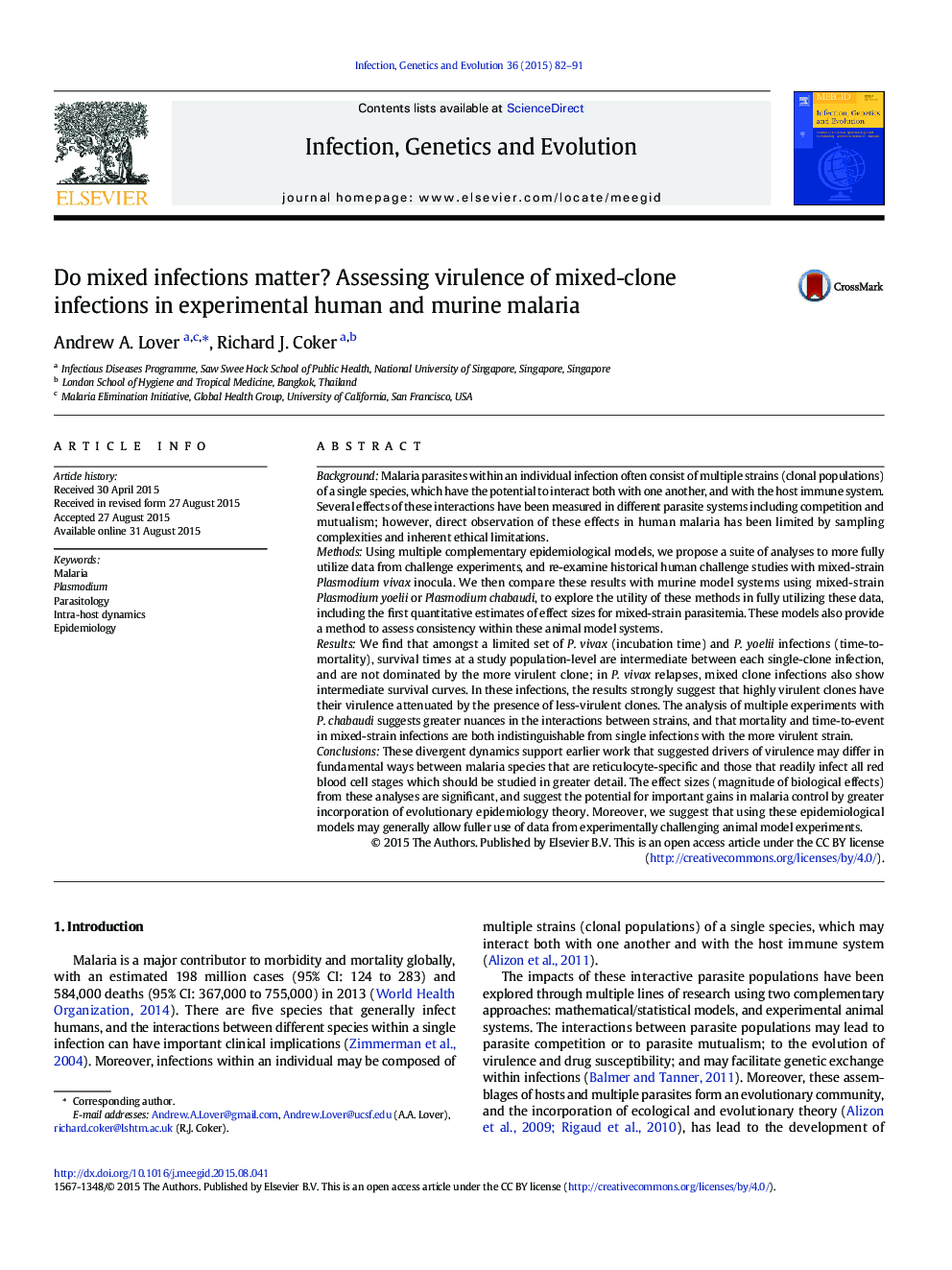| کد مقاله | کد نشریه | سال انتشار | مقاله انگلیسی | نسخه تمام متن |
|---|---|---|---|---|
| 5908524 | 1570167 | 2015 | 10 صفحه PDF | دانلود رایگان |
- We applied epidemiological models to historical human and murine experimental studies with mixed-strain malaria infections
- We find statistically and biologically significant differences between single and mixed strain infections
- We suggest a comprehensive analytical strategy for similar experiments, providing effect sizes and quantifying virulence
- We find further experimental support for divergent dynamics between reticulocyte-specific and generalist Plasmodium species
- This supports earlier work that dynamics and observed virulence vary in strain-specific ways during the timespan of infection
BackgroundMalaria parasites within an individual infection often consist of multiple strains (clonal populations) of a single species, which have the potential to interact both with one another, and with the host immune system. Several effects of these interactions have been measured in different parasite systems including competition and mutualism; however, direct observation of these effects in human malaria has been limited by sampling complexities and inherent ethical limitations.MethodsUsing multiple complementary epidemiological models, we propose a suite of analyses to more fully utilize data from challenge experiments, and re-examine historical human challenge studies with mixed-strain Plasmodium vivax inocula. We then compare these results with murine model systems using mixed-strain Plasmodium yoelii or Plasmodium chabaudi, to explore the utility of these methods in fully utilizing these data, including the first quantitative estimates of effect sizes for mixed-strain parasitemia. These models also provide a method to assess consistency within these animal model systems.ResultsWe find that amongst a limited set of P. vivax (incubation time) and P. yoelii infections (time-to-mortality), survival times at a study population-level are intermediate between each single-clone infection, and are not dominated by the more virulent clone; in P. vivax relapses, mixed clone infections also show intermediate survival curves. In these infections, the results strongly suggest that highly virulent clones have their virulence attenuated by the presence of less-virulent clones. The analysis of multiple experiments with P. chabaudi suggests greater nuances in the interactions between strains, and that mortality and time-to-event in mixed-strain infections are both indistinguishable from single infections with the more virulent strain.ConclusionsThese divergent dynamics support earlier work that suggested drivers of virulence may differ in fundamental ways between malaria species that are reticulocyte-specific and those that readily infect all red blood cell stages which should be studied in greater detail. The effect sizes (magnitude of biological effects) from these analyses are significant, and suggest the potential for important gains in malaria control by greater incorporation of evolutionary epidemiology theory. Moreover, we suggest that using these epidemiological models may generally allow fuller use of data from experimentally challenging animal model experiments.
Journal: Infection, Genetics and Evolution - Volume 36, December 2015, Pages 82-91
